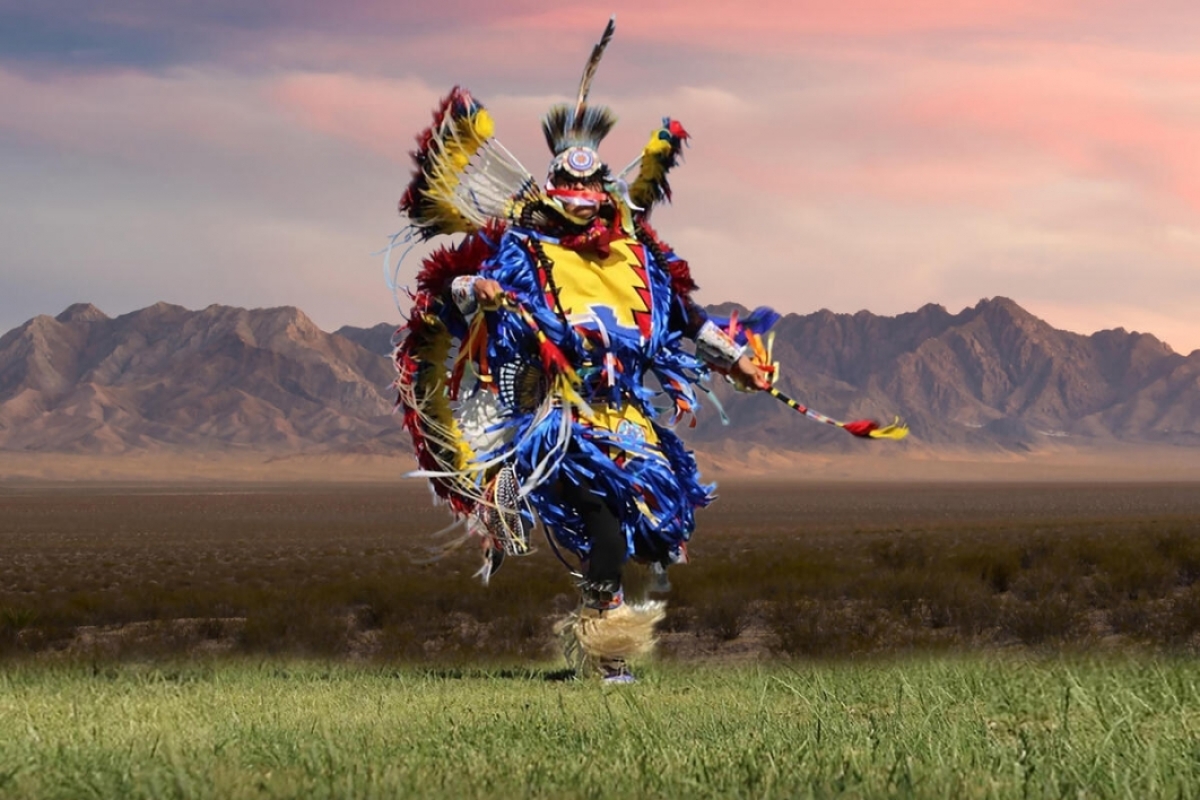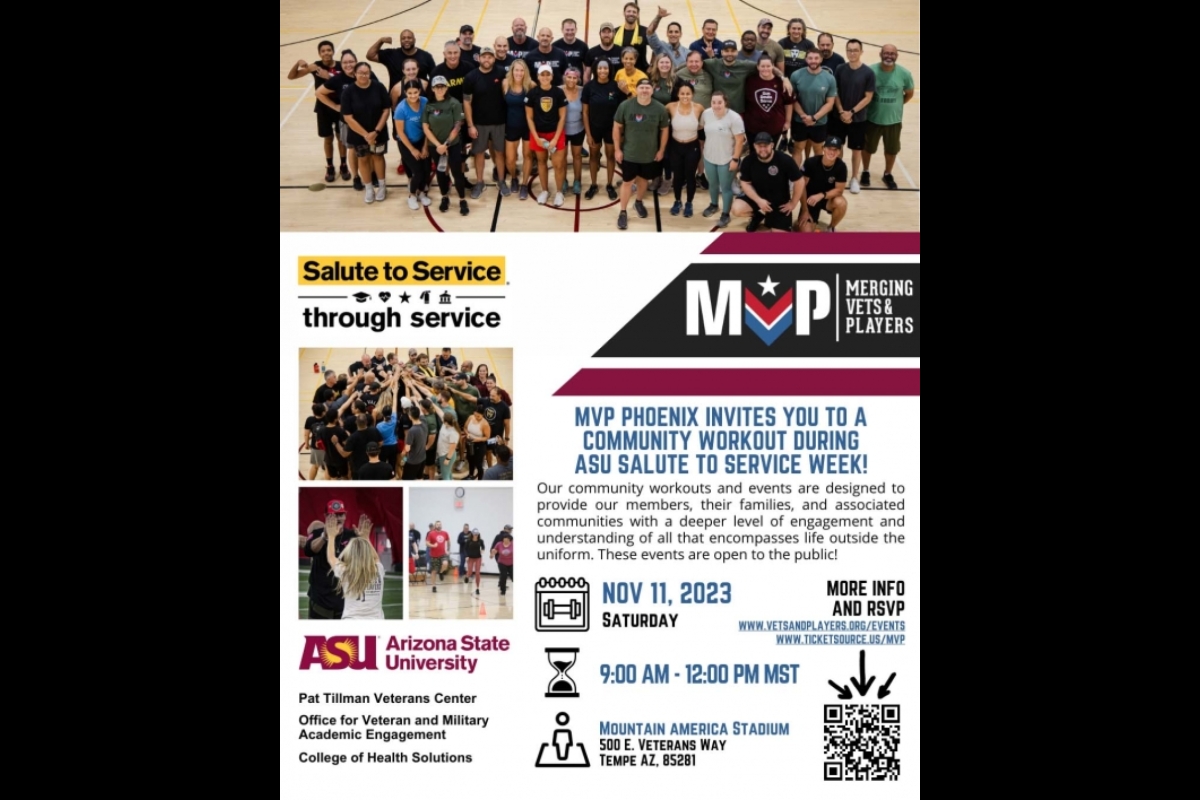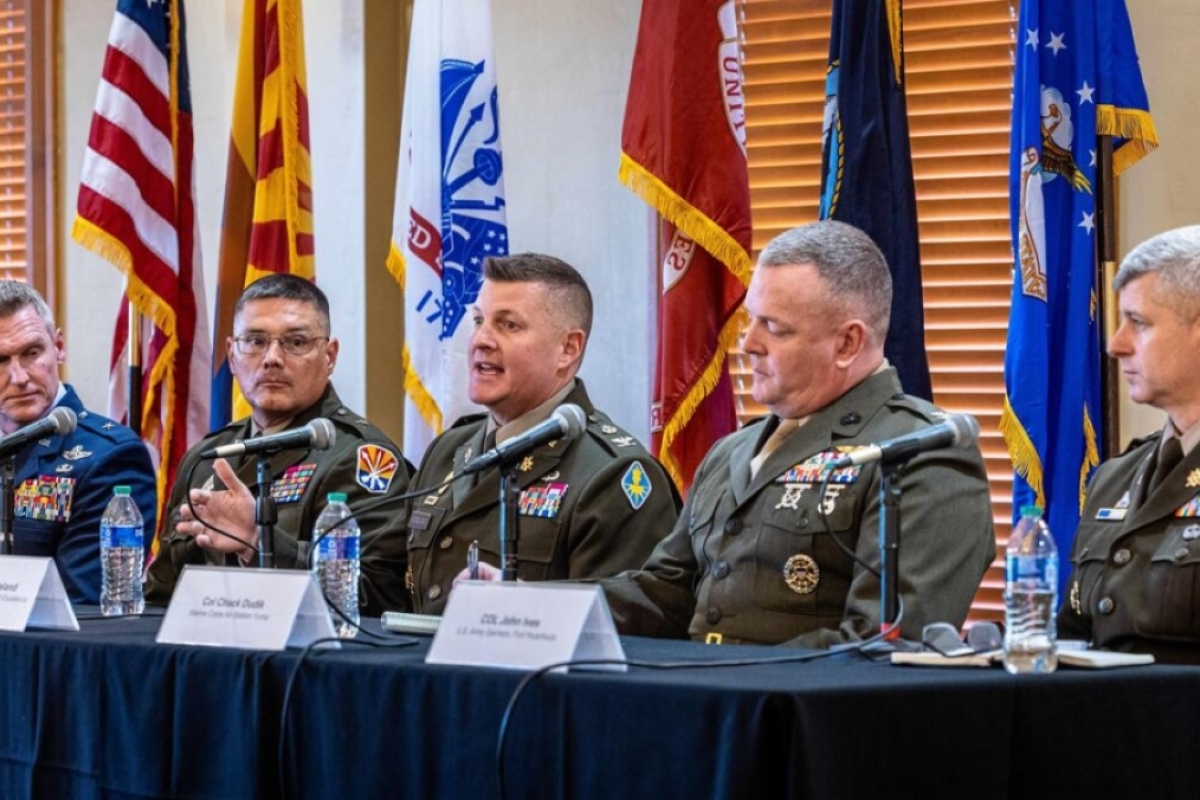Salute to Service begins Nov. 8 with events planned across ASU campuses
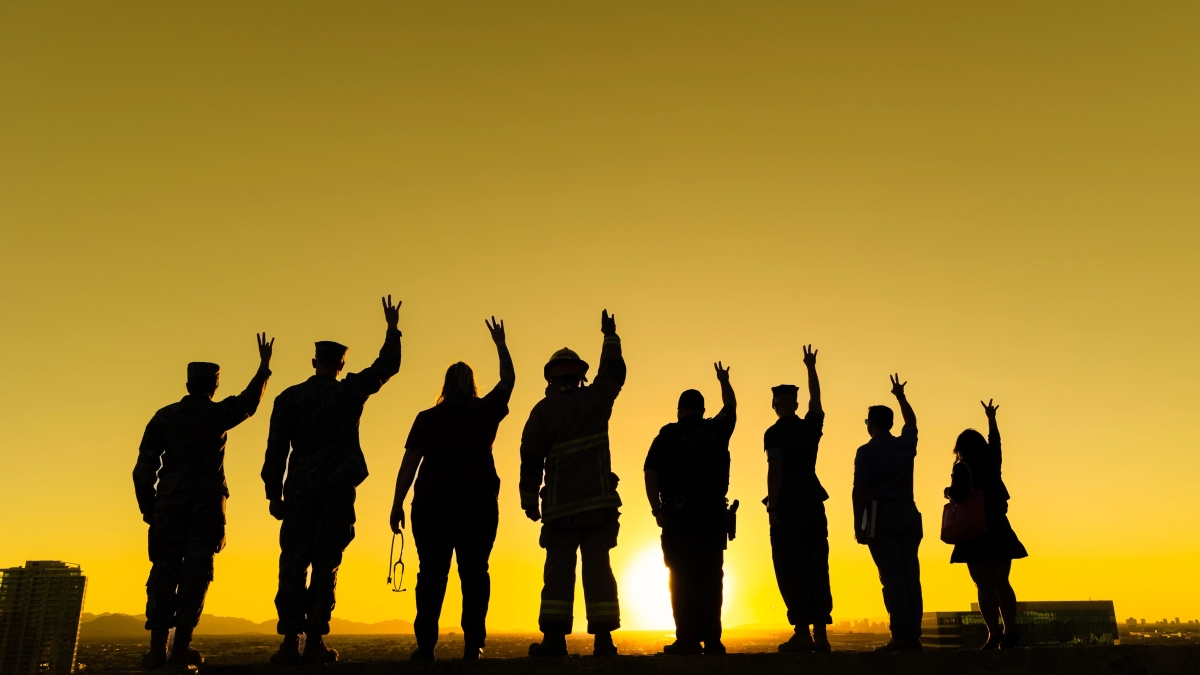
Arizona State University will celebrate those who have served the nation and their communities with an assortment of events across Phoenix metro campuses for this year’s Salute to Service happening Nov. 8–18.
Salute to Service honors the military veteran community along with first responders, front-line medical workers, volunteers and the many other individuals working in public service.
“We invite the university community and the public to join us for the fun and memorable events we have in store for this year’s very special Salute to Service,” said Michelle Loposky, chair for the Salute to Service planning committee and Pat Tillman Veterans Center director of development and strategic partnerships. “There is something for everyone, and most of the events are free.
“More importantly, we want everyone to come out as a show of appreciation for all who have served in the military, who have served their communities as volunteers, and who serve us today as first responders, medical personnel and in the public sector working to keep our towns, cities, state and the country running smoothly.”
Events taking place during Salute to Service include:
Game Watch Party
noon–10 p.m. Nov. 4
ASU MIX Center, downtown Mesa
Just prior to Salute to Service kicking off, take part in a free fun outing at ASU’s Mesa’s MIX Center and watch Sun Devil football take on the UCLA Bruins. Bring blankets or lawn chairs to watch the game outside on a 100-foot outdoor movie screen. Organized by Sun Devil Generations and the Pat Tillman Veterans Center, the event will also feature food trucks and other family-friendly activities.
Thank You for Your Service Networking Event
4–6 p.m. Nov. 7
A.E. England Building, Downtown Phoenix campus
Practice networking skills with professionals who will be available to answer questions about various occupations and how to get into service-oriented fields, such as law enforcement, nursing or social work. The event is “come and go” with complimentary light food and beverages available. Visit the event homepage for more information.
Movies on the Field — “Top Gun: Maverick”
5:30–9:30 p.m. Nov. 10
Mountain America Stadium, Tempe campus
Bring a blanket and the whole family to enjoy a free movie as Movies on the Field kicks off this semester during Salute to Service with “Top Gun: Maverick.” Doors open at 5:30 p.m., with the movie starting at 7 p.m. Register at ASU 365 Community Union.
Rúla Búla Pop-Up
Various times, Nov. 10–16
Coca-Cola Sun Deck, Mountain America Stadium, Tempe campus
Iconic Mill Street bar Rúla Búla may have closed in 2021, but this year during Salute to Service it returns for a multiday pop-up pub experience inside Mountain America Stadium. Bar owners will bring back some of the original bar, art, décor and signage and serve food and drink. The bar will be open for seven straight days. Visit the ASU 365 Community Union event page for opening times and other info.
West Valley Forward Pow Wow
11 a.m.–10 p.m. Nov. 11
West Valley campus
Celebrate Native American heritage and honor the contributions of all U.S. veterans with the return of the Native American Heritage Festival featuring the 20th Annual Veterans Day Weekend Pow Wow at the Fletcher Library lawn. The Pow Wow is a traditional gathering of dancers, drummers, elders and families. The arena director will explain the symbolism, protocol and spiritual meaning of the dances, regalia, singing and drumming. The event also includes a mix of vendors and other family-friendly activities.
MVP Community Workout
9 a.m.–noon Nov. 11
Mountain America Stadium, Tempe campus
All members of the public are invited to join Merging Vets and Players (MVP) for a free community workout inside the football stadium. Founded by NFL insider Jay Glazer and former Green Beret and Seattle Seahawk Nate Boyer, MVP is a nonprofit that brings together combat vets and former pro athletes to participate in a variety of sporting and community events, including workouts, golf tournaments, hikes, etc. For more information, visit the event page.
Caregiver Panel Discussion
4:30–6 p.m. Nov. 15
Cooley Ballroom, Polytechnic campus
ASU’s Office for Veteran and Military Academic Engagement will host a caregiver panel to get insights and experiences from caregivers who have supported veterans. The panel aims to provide valuable information on caregiving, challenges, coping strategies and available resources. Visit the event page for more information and to register.
Panel and Lunch with Arizona Military Leaders
Noon–2:15 p.m. Nov. 17
Old Main, Tempe campus
Join the military commanders from Arizona’s Army, Air Force and Marine Corps military installations and their senior enlisted leaders for a complimentary lunch and discussion on how the U.S. military is preparing for future conflicts. The enlisted leaders will host a second panel to discuss what it means to serve in today’s military. Registration is required.
Salute to Service football game
TBA, Nov. 18
Mountain America Stadium, Tempe campus
Come out and support Coach Kenny Dillingham and the ASU Sun Devils as they take on top nationally ranked opponent Oregon Ducks. Pregame events on College Avenue will include military displays, service members interacting with the public, and many other activities.
Visit the Salute to Service homepage for a complete list of all the events.
More Arts, humanities and education

Award-winning playwright shares her scriptwriting process with ASU students
Actions speak louder than words. That’s why award-winning playwright Y York is workshopping her latest play, "Becoming Awesome," with actors at Arizona State University this week. “I want…
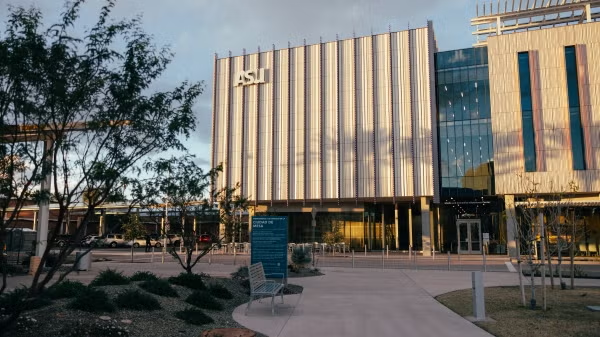
Exceeding great expectations in downtown Mesa
Anyone visiting downtown Mesa over the past couple of years has a lot to rave about: The bevy of restaurants, unique local shops, entertainment venues and inviting spaces that beg for attention from…

Upcoming exhibition brings experimental art and more to the West Valley campus
Ask Tra Bouscaren how he got into art and his answer is simple.“Art saved my life when I was 19,” he says. “I was in a dark place and art showed me the way out.”Bouscaren is an …


